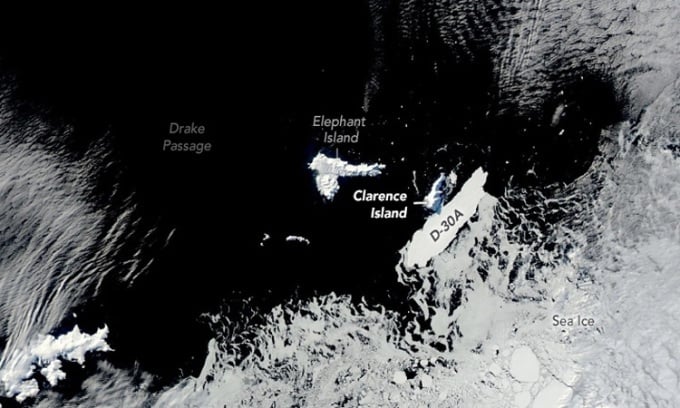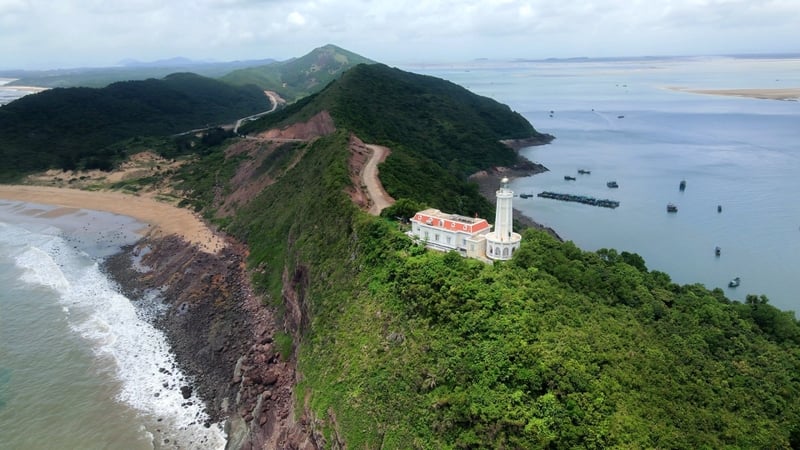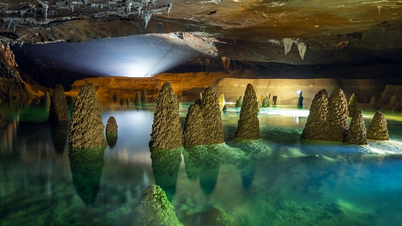Iceberg D-30A crashed into Clarence Island, which is home to 100,000 pairs of chinstrap penguins, but luckily they were out foraging at the time.

Satellite footage of the collision between D-30A and Clarence Island. Photo: NASA
A massive iceberg half the size of Rhode Island crashed into a penguin rookery in Antarctica on September 6, two years after a similar collision in 2021. The giant iceberg, named D-30A, is 72 kilometers long and 20 kilometers wide. It is the largest remaining piece of D-30, which formed in June 2021 when its parent iceberg D-28 crashed into an island near the Borchgrevink Ice Shelf in East Antarctica and split in two. Since then, D-30A has been slowly drifting west along the Antarctic coast.
In late 2022, D-30A suddenly changed course and headed straight for Clarence Island, the easternmost of the South Shetland Islands, which has a surface area about 10 times smaller than D-30A. On September 6, the iceberg hit the southern coast of the island before spinning eastward and heading out to sea a few days later, according to NASA's Earth Observatory.
Clarence Island is an important breeding ground for chinstrap penguins ( Pygoscelis antarcticus ), with about 100,000 pairs visiting the island each winter to lay and incubate their eggs. Researchers are concerned that the iceberg could impact the penguin population. "It's very fortunate that the chinstrap penguins that breed there haven't returned to their nests yet," said Heather Lynch, a statistical ecologist at Stony Brook University in New York. "If the collision had happened two months later, when the penguins were on the island, it could have been very serious."
Icebergs colliding with islands could harm wildlife, especially if they become trapped on the seafloor around isolated landmasses. Icebergs can prevent animals from swimming out to sea to feed, and they can also change the temperature and salinity of the surrounding ocean. As ice melts along the seafloor, it can disrupt ecosystems, severely disrupting the surrounding food web. The seafloor around Clarence Island could help stave off disaster because of its great depth, making it less likely that D-30A would become trapped there, said Christopher Shuman, a glaciologist at NASA’s Cryosphere Science Laboratory and the University of Maryland.
Even if the iceberg doesn’t get stuck for long, however, it could cause real problems for the penguins that nest on the island. While incubating their eggs, penguins wait for their mates to return from hunting with them. A few days of being blocked from returning to the colony could mean a year of failed breeding. But as D-30A passes over the island, it could release iron-rich ice water that supports algae growth in the area.
D-30A is currently heading toward the Drake Passage, where large icebergs are often caught in ocean currents that pull them into warmer waters and slowly melt. In November 2022, the world’s previous largest iceberg, A-76A, was spotted following a similar path before breaking up in June of this year.
An Khang (According to Live Science )
Source link




























![[Photo] National Assembly Chairman attends the seminar "Building and operating an international financial center and recommendations for Vietnam"](https://vphoto.vietnam.vn/thumb/1200x675/vietnam/resource/IMAGE/2025/7/28/76393436936e457db31ec84433289f72)










































































Comment (0)